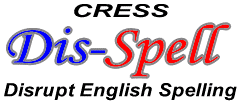A big part of early school is learning to say the alphabet. How smart do we do it? You can can watch our videos to see how much rank stupidity there is in how we say the alphabet.
Here we will just show the super simple smart way to say the alphabet.
First, it’s important to teach two pieces: vowels and consonants. That difference is just part of learning a bit about what it is to be a human being. It brings in a good piece of phonemic awareness in a simple logical way: understanding pronunciation of vowels and consonants.
Vowels
So let’s say the vowel alphabet first. We always taught that the letter U is said like the word YOU. You may have noticed that the pronunciation of YOU is not a smart guide to the letter U. When you say the word BUD, you don’t say BYOUD. This nonsense is present for all the vowel letters so let’s get started with the smart way to say the vowel alphabet AEIOU. There are just 5 very simple sounds on which all pronunciations are built
-
- SA as in sought or father
(Don’t worry if your dialect, Boston or many others is a little different, it all falls together nicely. And note CRESS flexibility will allow you your own conventions and convert automatically in later advanced versions!)
-
- SI as in sit.
- SE as in set.
- SU as in soot
- SO as in sore, what you say just before the R
All you have to say is SA SI SE SU SO using these pronunciations. You can even say SA SI SE SU SO as SOUGHT SIT SET SOOT SORE if you like.
That’s it, the whole vowel alphabet leading to all sounds you say. We won’t spell them out here, but just give one example to show how simple it all is. Say the word sit with a very long vowel. Now say it long again but put your hand under your jaw and push the jaw up. You will hear the word seat from sit, and see simply why we write that vowel as I plus up arrow ^. This shows you rais the tongue higher to get seat. All so simple and the same idea applies to all the arrows CRESS uses.
Consonants
The consonant alphabet is just as simple.
First, we don’t need the letters C, J, Q or X, so the alphabet is already reduced from 26 to 21 letters including the vowels.
Also, just like with vowels, we won’t need combinations such as TH, SH but can still represent each sound of English. (But note CRESS flexibility will allow you your own conventions and convert automatically in later advanced versions!)
Here is the consonant alphabet, always illustrated with the A sound:
- Ba as in bog
- Da as in dog
- Fa as in fog
- Ga as in goggle
- Ha as in hog
- Ka as in cog
- La as in log
- Ma as in mop
- Na as in not
- Pa as in pot
- Ra as in rot
- Sa as in sought
- Ta as in taught
- Va as in vest
- Wa as in West
- Ya as in yes
- Za as in zest
You can just say BA DA FA GA HA KA LA MA NA PA RA SA TA VA WA YA ZA
It’s just as simple as that. We won’t go over the use of arrows here, but just point out the simplicity. Say the first S sound in sit stretched out very long so you can hear the S by itself. Now repeat stretching it out again but consciously force your tongue forward until you can feel it between your upper and lower teeth. When you do this you will easily see the logic of writing the TH sound simply as an S with the arrow < pointing to the front. This is part of your English language and is so simple and builds in phonemic awareness automatically. It simplifies of course but also clarifies, because you will find that the first sound in the word the is not the same sound. You get that sound by pushing the tongue forward for Z rather than S, so we simply write Z< for that sound.
